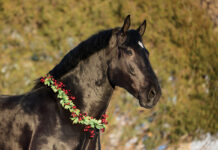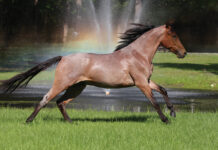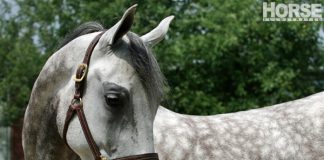Swedish Warmblood
Evidence shows that equines have been in Sweden since 4000 B.C. In the 1500s, the Swedish government began importing horses, most notably Dutch Friesians and some saddle breeds, to improve the indigenous Scandinavian horse. The national stud farms were located in Flyinge, Stromsholm and Kungsor. In 1658, the Swedish King Carl X Gustav set up a Royal Stud at Flyinge, choosing the best horses from the national studs. Traditionally, breeding of warmbloods in Sweden focused on two goals: farming and cavalry. In 1874 the Swedish government began inspections to stop indiscriminate breeding and create cohesive breeds, one of which was the Swedish Warmblood. The breed included the blood of the Anglo-Norman, Trakehener, Thoroughbred and Hanoverian. Unlike other warmblood breeds, the Swedish Warmblood was bred to be a saddle horse only. The Swedish Warmblood excels in all Olympic disciplines, in particular jumping and dressage.
Characteristics:
The studbook for the Swedish Warmblood remains open and many breeds are allowed, as long as they can pass the difficult inspection and fulfill requirements. Breeds include all European warmbloods, Thoroughbreds and Arabians. The Swedish Warmblood is a strong, athletic animal with beautiful flowing gaits. Horses are found in all solid colors and stands from 16 to 17 hands.
For more information:
The Swedish Warmblood Association of North America, www.swanaoffice.org





